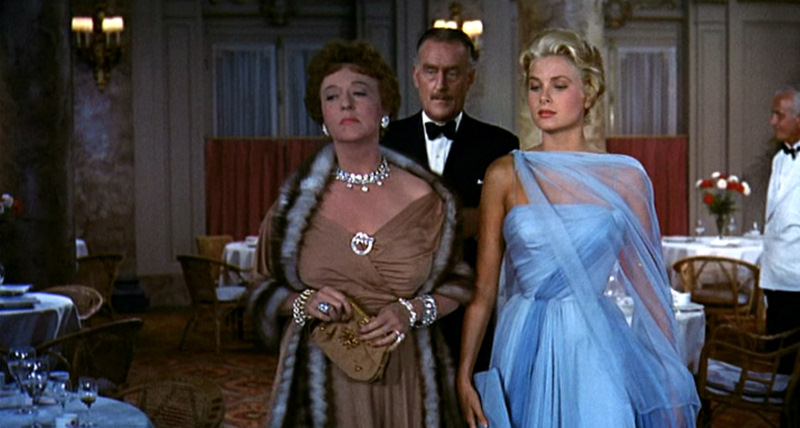“I was so skinny, they gave me the nickname stechetto – the stick. I was tall, thin, ugly and dark like an Arab girl. I looked strange. All eyes. No flesh on my bones.” ~ Sophia Loren
One thing I have been doing a lot of lately is watching old movies. To take my mind off all the unsettled uncertainty that’s been going on in my life at the moment, the other day I decided on a classic movie marathon.
I watched Casablanca, Sabrina, To Catch a Thief, and The Philadelphia Story.
And I was struck by how waif-like the actresses were. And the thought that those who slate movie actresses for being unrealistically thin, and bemoan this as a phenomenon peculiar to the modern media, can’t possibly have watched a single one of them.
Katherine Hepburn was tall, and slim, and reed-like. Audrey Hepburn was a mere slip of a thing. And Brigitte Auber looked like she hadn’t eaten a square meal in her whole life.
Grace Kelly had a fuller figure, but with roughly the same proportions as a Barbie doll. And Ingrid Bergman was hardly what you’d call curvy.
Now I’m not saying any of these things to criticise. I happen to think that the women I’ve just mentioned were some of the most beautiful film actresses who’ve ever lived. What I do think it suggests is that the case for condemning the modern media for supposedly putting too much pressure on women to be thin is overstated.
It is as it ever was.
The media has always held up impossibly beautiful women, with practically unattainable looks, and posited them as some kind of ideal for all women. And on the whole those women have always been thin. They’ve certainly never been plus sized.
I mean, sure there was Marilyn Monroe. But if you compare her to the other stars of her time you’ll find that she was her generation’s Beyoncé. The exception, not the rule.
And she was glamourous. They all were. In a way that was completely beyond the reach of the average woman of their day.
Whereas most people now could adopt the image of their favourite reality TV star if they really wanted to.
And, of course, I’m aware that the consumption of media, and in particular media images has increased immeasurably since the golden age of cinema. But then so have women’s opportunities.
I find it a stretch to believe the suggestion that consumption of magazines such as Hello, OK!, and Closer today exert a greater amount of pressure on a person to look a certain way than did the societal expectation of the 1950s that one simply must find a husband.
The experience of pressure to conform is not the same when one has other tolerable options.
Even as recently as my childhood there was an expectation that people would marry, and they would have children, and they would do both of these things young. And in order to marry, and to have those children, one needed to be pretty. And pretty meant thin.
And the alternative, the only alternative that many could see, was to end up as a crazy, ugly, unwanted spinster.
Of course there are many people who still believe that today, but it just isn’t the same. There are other options, and a growing number of people choosing to pursue those options.
So, while I don’t think the obsession and dissatisfaction of some of our present generation with their body image is a positive thing, I don’t think this issue is really as new as it’s often made out to be.





I think the difference is that media is so much more pervasive now and so much more forceful. Did they have Cosmo or Marie Claire around then hammering the point home as well? No.
LikeLike
I don’t know about Marie Claire, but there was Cosmo. But my point is you can choose not to read Cosmo, or Marie Claire, you choose which media you consume.
I just think the idea that ‘the media’, however much you’re exposed to it, is a more powerful force than a family, friends, and society which all expect you to behave a certain way is far-fetched.
In the forties and fifties there were no realistic alternatives to conformity unless you were prepared to accept scandal and censure. And conformity meant finding a husband, and having a family. And that meant adopting society’s ideal image of a woman.
Woman now have options. Our entire future happiness and financial stability doesn’t depend on us fitting the same cookie cutter mould. It’s just not the same kind of pressure.
LikeLike
Hmm, but I doubt the standards of magazines then were anywhere near what they are today.
I don’t personally consume much media (and hardly any that’s women-specific) and I don’t personally feel all that much pressure, but even things like billboards, TV/radio advertising, magazines on stands at the supermarket checkouts, all get a lookin in the average woman’s life.
I’m talking here specifically about appearance and body image. I agree that today women have more options in a wider context.
LikeLike
There is something about a great classic movie I just love! Myabe because they seem less complicated!
http://coffeebeansandbobbypins.blogspot.com/
LikeLike
I think it’s because it’s like looking into a completely different world, it’s more escapist that way.
LikeLike